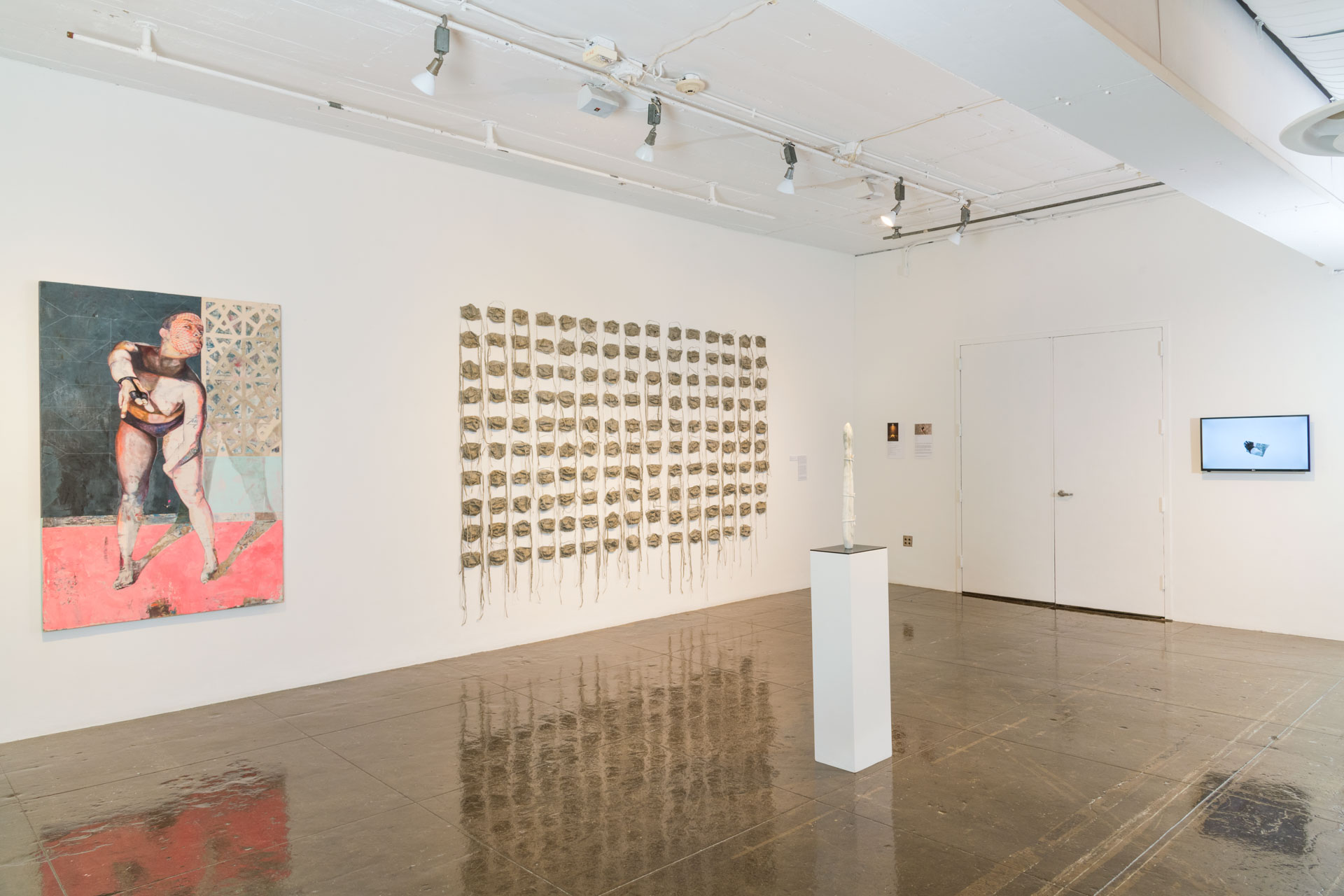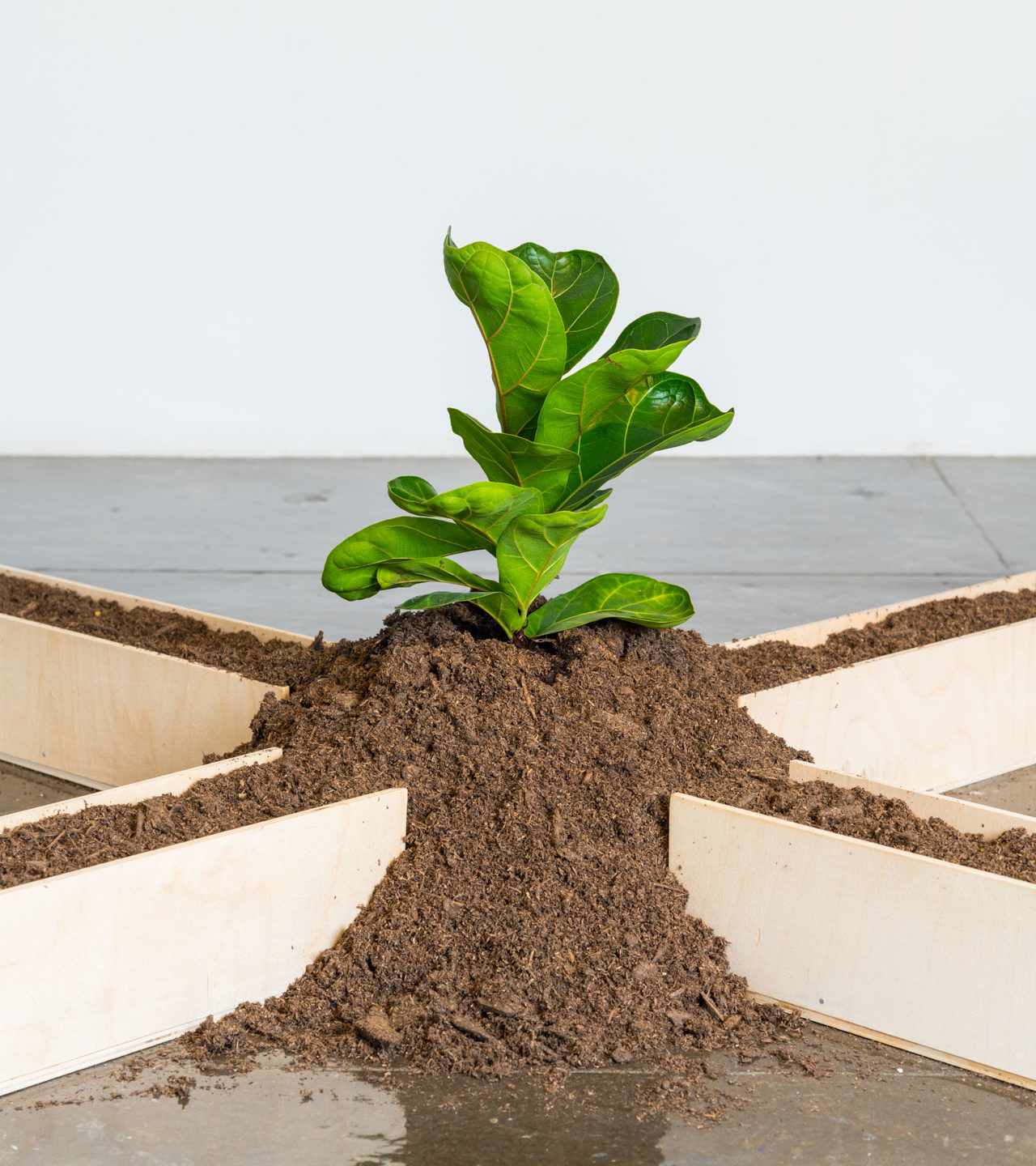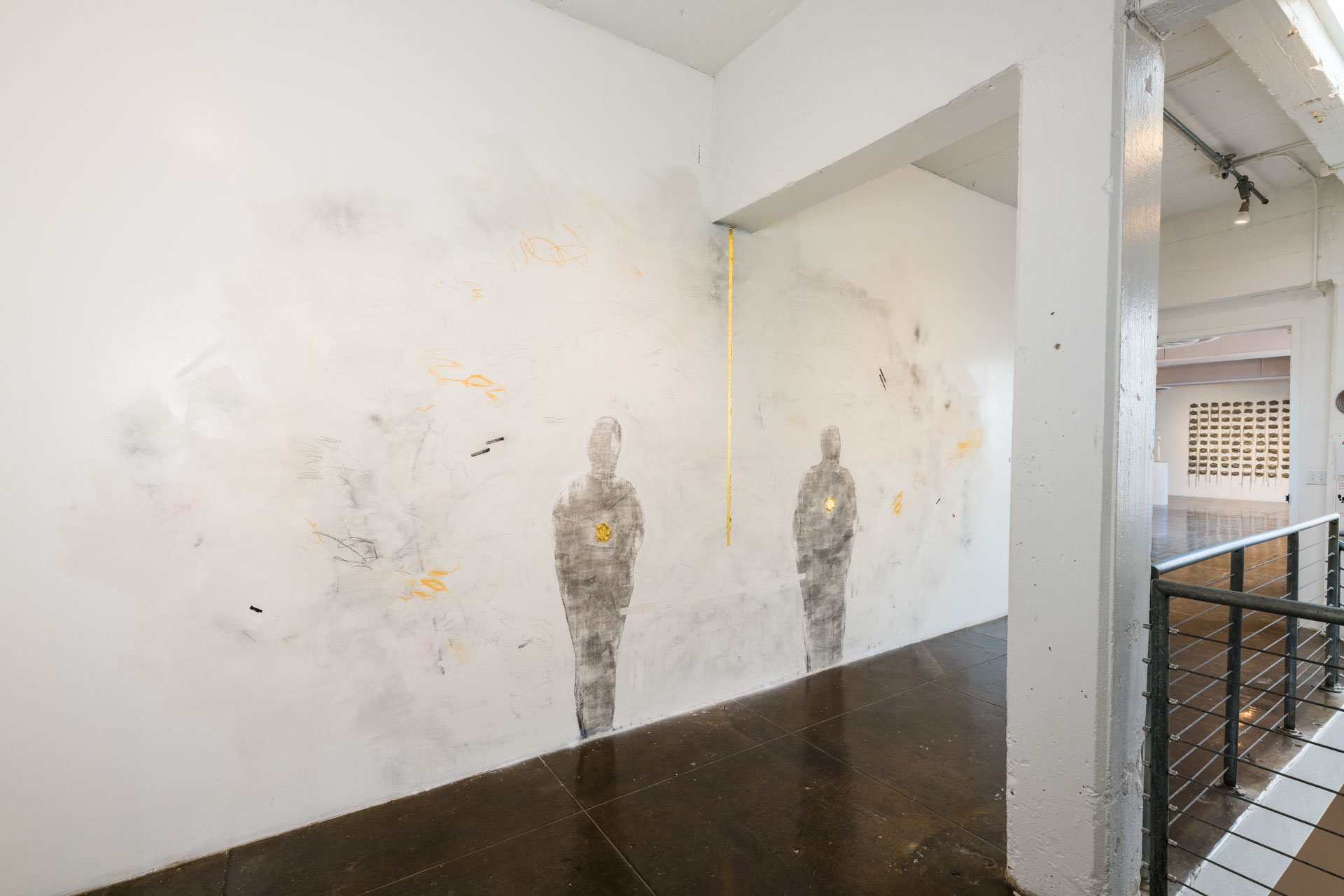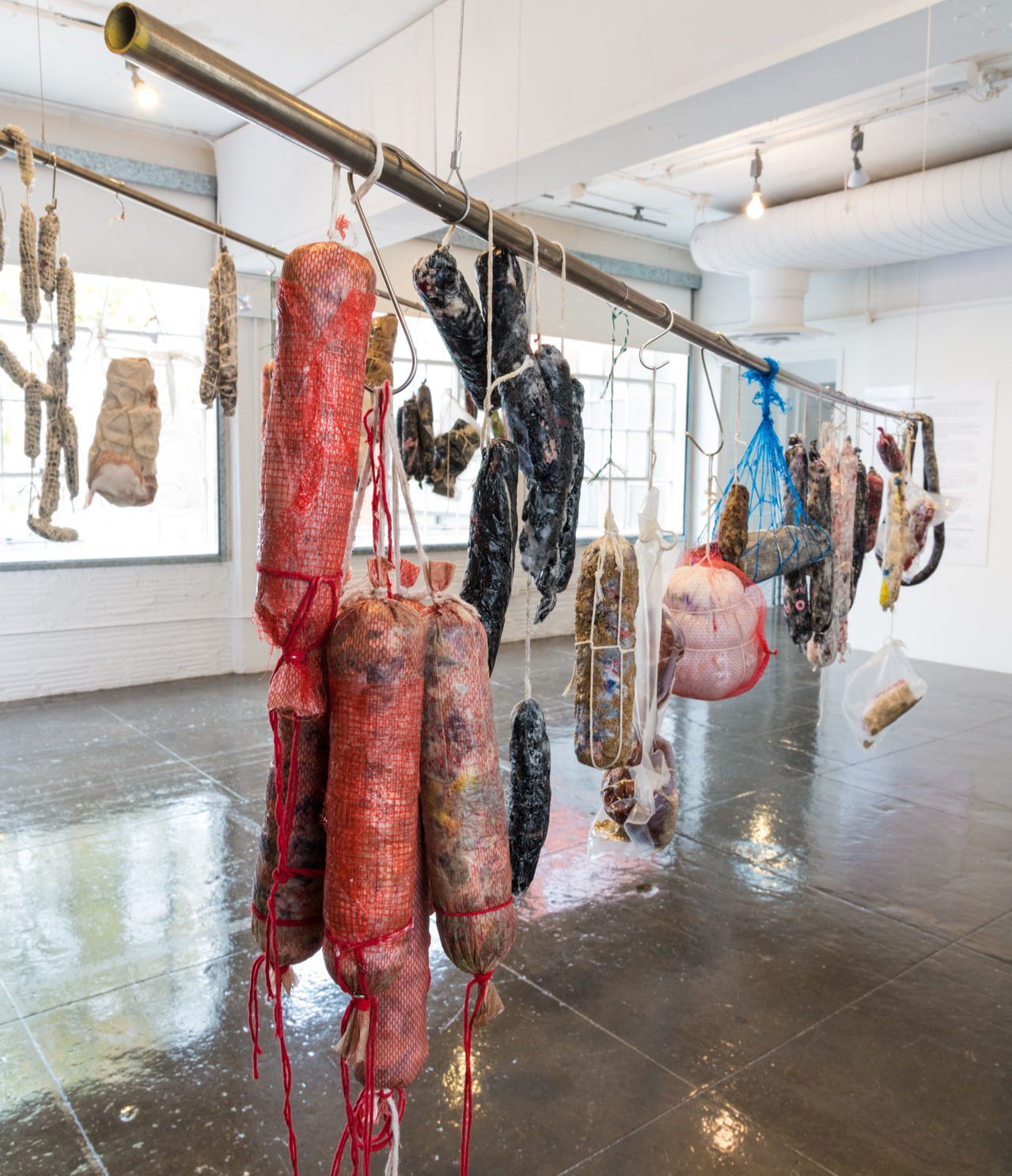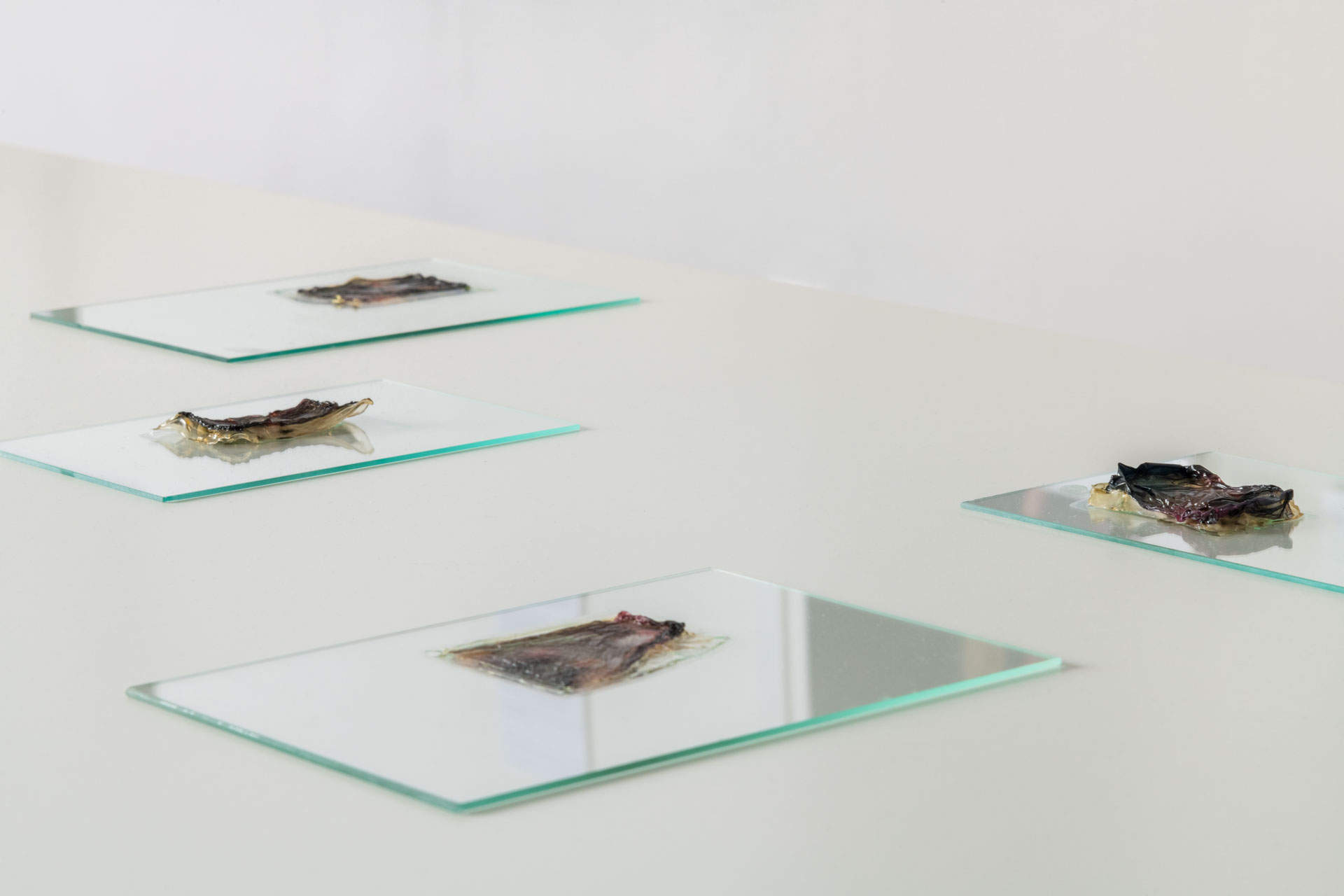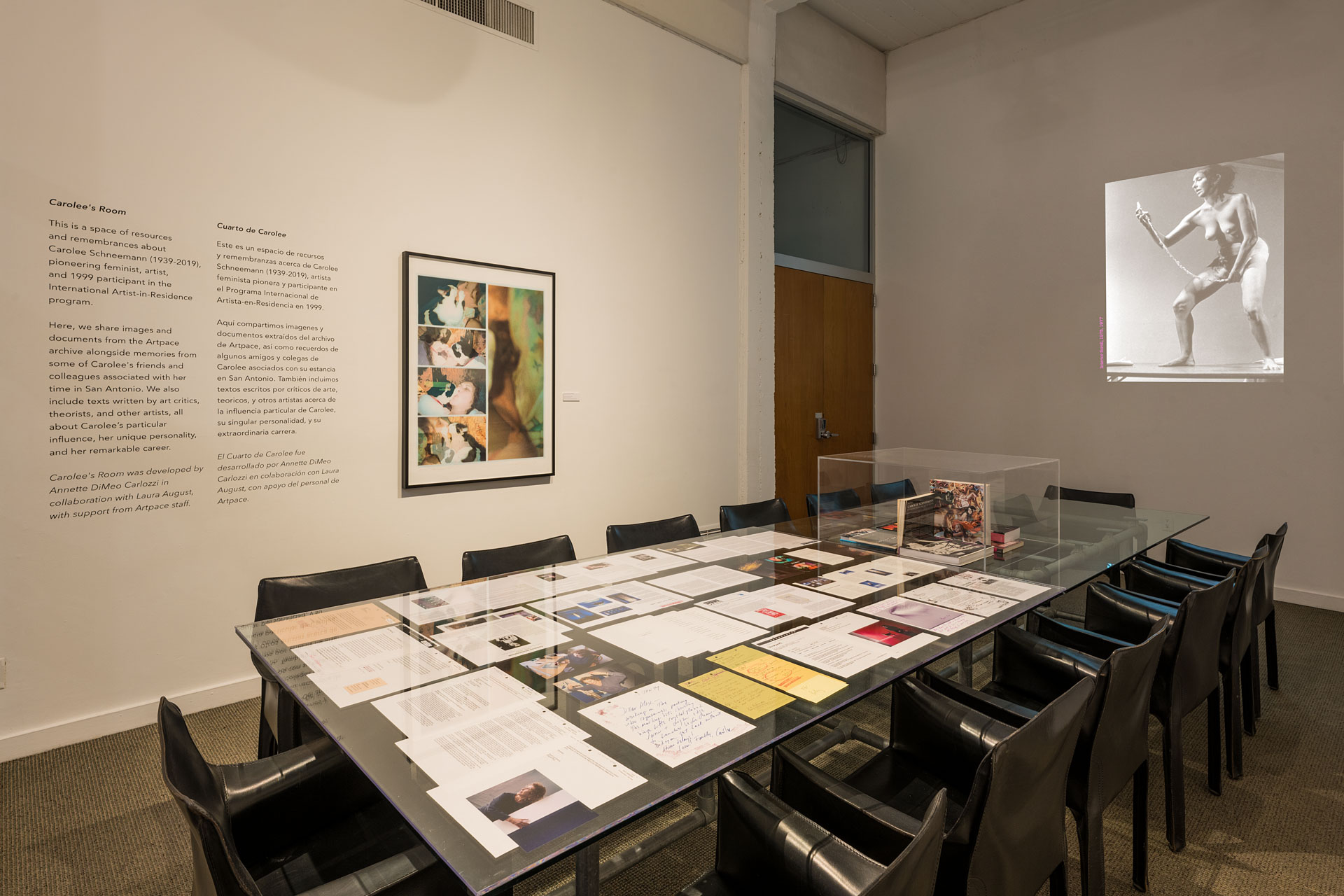After Carolee: Tender and Fierce
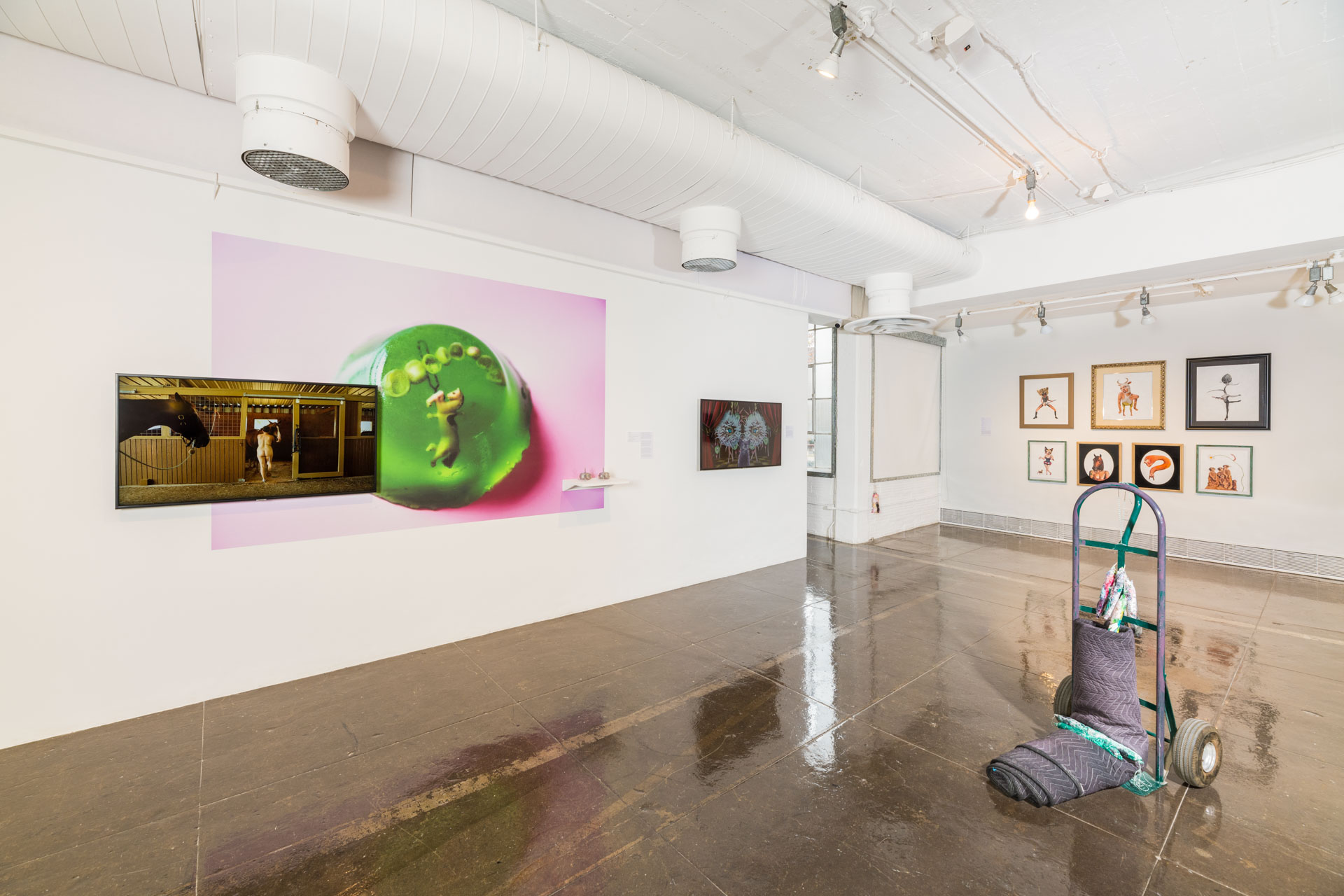
After Carolee: Tender and Fierce, installation view, 2021. [photo: Beth Devillier; courtesy of Artpace San Antonio]
Share:
When Carolee Schneemann passed away two years ago at age 79, there was an immediate sense that a bold visionary had left this world. Schneemann’s groundbreaking work as a multidisciplinary artist and performer, starting in the 1960s, paved the way for a feminist avant-garde that is still pushing cultural parameters.
After Carolee: Tender and Fierce [January 7–April 25, 2021] is a female-centered group exhibition tracing the influence of Schneemann’s early pioneering days through the works of 14 contemporary artists with ties to Texas. Featuring the kind of charged, multisensory installations that Schneemann herself was known for, After Carolee presents a vibrant conversation in virtual format.
“It’s a very embodied exhibition, a characteristic we see in Carolee’s work,” says curator Annette DiMeo Carlozzi. “I confess to a soul-deep disappointment at not having viewers’ bodies in the space during COVID—but the doing still has so much power.”
Conceived for Artpace’s 25th anniversary, After Carolee honors the enduring feminism of Schneemann’s legacy, though its pre-pandemic vision took on new urgency as 2020 unfolded. Several works respond directly to the year’s extraordinary events, such as Beili Liu’s A Breath (2020), an installation of 149 ghostly facemasks pinned to the gallery wall, measuring how many breaths the artist could take in the 8 minutes and 46 seconds it took for George Floyd to stop breathing.
After Carolee: Tender and Fierce, installation view, 2021. [photo: Beth Devillier; courtesy of Artpace San Antonio]
Ayanna Jolivet Mccloud, Balm, 2020 [photo: Beth Devillier; courtesy of the artist and Artpace San Antonio]
Ayanna Jolivet McCloud’s Balm (2020) sits in meditation, adjacent to the main space. Fresh soil and new life spring from the gallery floor, at a crossroads that is metaphoric and metaphysical. A collage of “found sound” conjures a primordial connection through nature and song to give meaning to a moment, states McCloud, in which Black life is precarious.
“These are ongoing investigations for these artists,” says Carlozzi. “They’re not simply single works of art for an exhibition.” This insistent impulse, to create from one’s essence, she notes, can also be seen in Carolee’s work.
When Schneemann was an artist-in-residence at Artpace in 1999, she embarked on a project that examined the fragility of life through the recent death of her cat. Vesper’s Pool (1999–2000) featured a wall of objects pertaining to the cat, Vesper; behind that wall, a dark space awash with projected images showing his life, his environment, and eventually his burial. Its themes of autobiography, empathy, and nature are evident in the works throughout After Carolee.
The duo SAINTLORRAINE’s Centerfold (2020) depicts two traced charcoal figures as evidence of their once-physical presence in the space. Dancer Britt Lorraine and her partner, visual artist Kristy Perez, have left imprints of their bodies as endurance art in lieu of a live activation.
A performance trilogy by Amber Bemak and Nadia Granados showcases a raw repertoire of pornography, public indecency, Coney Island, and Crawford, TX. Each film is a mashup of imperialism and ecofeminism. In one scene, the two women carefully slip into mesh trash cans on a beach, naked but for their hosiery and stilettos. The visual emphasizes that misogyny—not nudity—is the true indecency.
Saintlorraine, Centerfold, 2020, performance installation [photo: Beth Devillier; courtesy of the artists and Artpace San Antonio]
Kristen Cochran’s cured bodies, or the transmogrification of labor into sausages or how atrophy leads to alchemy leads to agency are soft sculptural forms hanging (mostly) in the middle of the space. Three-dimensional, bodily, and colorful, each sausage is made of cured clothing donated by other artists in the exhibition, creating an abstract portrait of a group unable to gather in the gallery.
Paloma Mayorga’s tócame/no me toques (touch me/touch me not) (2019-2020) appears to be a time-based cultural critique of the aging woman; a metaphor for menopause. Images of photocopied fingertips have been transposed onto fresh gelatin, which shrivel and morph across their lifespan.
The entire space teems with strong assertions, but perhaps the loudest voice comes from the quietest medium. The subject in Lovie Olivia’s painting Open Carry points a gestural gun at the viewer while standing on a plane of soft pink. Her body hits unnerving angles as she stares you down; an unnaturally craned neck suggests she is not a woman but a witch.
Kristen Cochran, cured bodies, or the transmogrification of labor into sausages or how atrophy leads to alchemy leads to agency, 2020 [photo: Beth Devillier; courtesy of the artist and Artpace San Antonio]
Paloma Mayorga, tócame/no me toques (touch me/touch me not), 2019-2020 [photo: Beth Devillier; courtesy of the artist and Artpace San Antonio]
After Carolee: Tender and Fierce, installation view, 2021 [photo: Beth Devillier; courtesy of Artpace San Antonio]
If tender and fierce are the two electrical currents coursing through the exhibition, then a dimly lit space downstairs, below the gallery, is the fusebox. Carolee’s Room completes the circuit. It is an accumulation of the icon’s work: a conference table covered in obituaries, essays, accolades, and notes. Projected images of Schneemann’s paintings—her earliest and perhaps truest medium—light up the back wall.
“You get the texture of her legacy in that room,” says Carlozzi. From there, up the flight of stairs, is a new generation of artists. Pushing ahead, pulling from the past—putting together what comes after Carolee.
